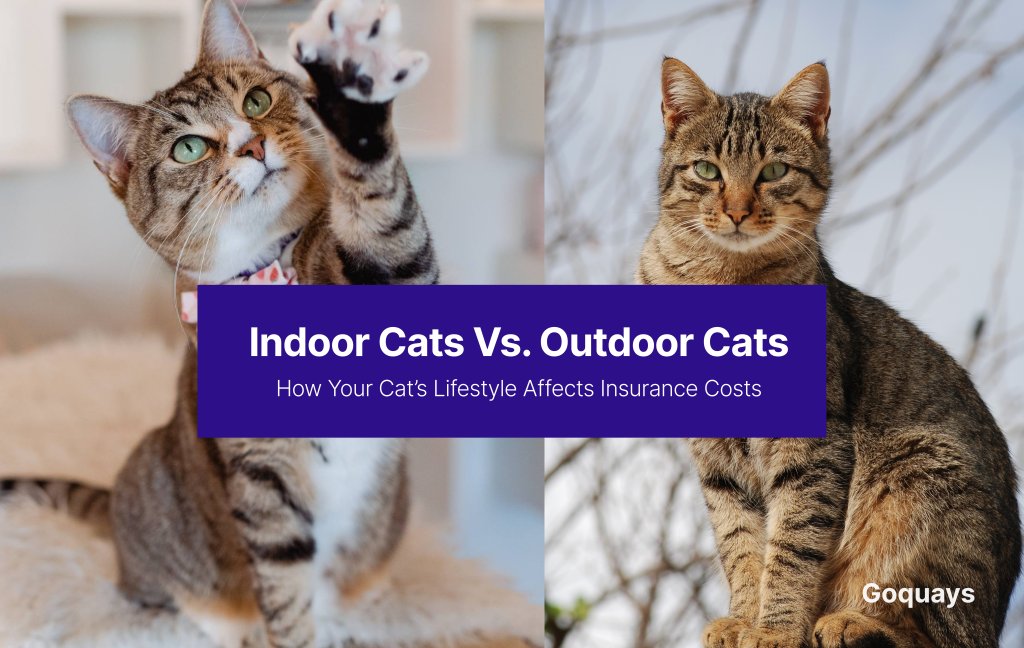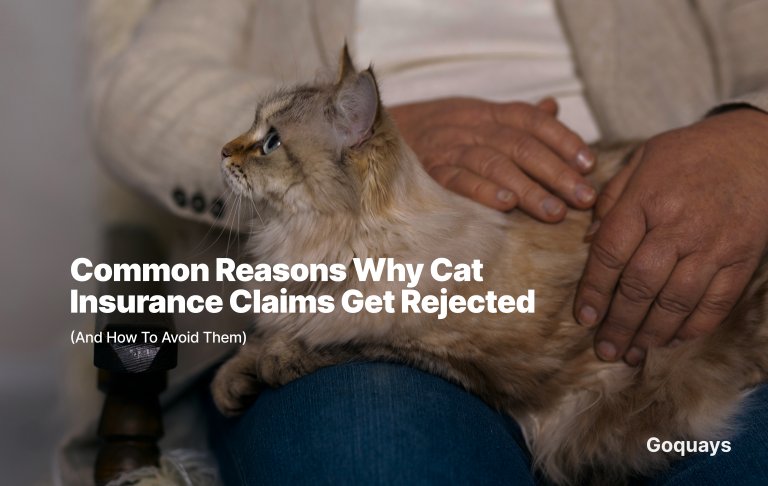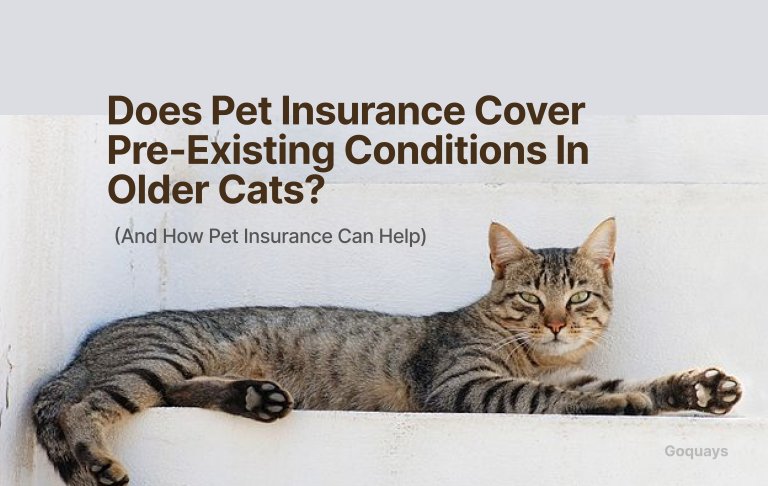When caring for your cat, choosing between an indoor or outdoor lifestyle is an important decision pet parents have to make. Some cat parents prefer to keep their pets indoors, believing that it is safer and a more controlled environment. On the other hand, some pet parents allow their cats to roam about, believing it gives their cats more freedom to be themselves. But what most cat parents don’t know is that this decision can impact their pet insurance cost.
Pet insurance is designed to help cover the costs of veterinary care, from routine check-ups to emergency treatments. However, not all cats pose the same level of risk, and factors like age, breed, and medical history play a role in determining insurance premiums. One of the most overlooked influences on pet insurance cost is whether a cat lives indoors or has access to the outdoors.
This content will explore how the lifestyle of your cat impacts their health and your pet insurance cost. Understanding these factors will help you make an informed decision for your cat’s well being
Outdoor cats are more likely to encounter hazards such as traffic, predators, fights with other animals, and exposure to diseases, leading to more frequent veterinary visits. Meanwhile, indoor cats, though generally safer, face their own health challenges, such as obesity and stress-related conditions. These differences translate into varying insurance costs as companies adjust premiums based on risk assessments.
Pet insurance for cats

Pet insurance helps cat owners manage the unpredictable costs of veterinary care without facing any financial strain. However, not all insurance plans are the same, and different factors—such as your cat’s age, breed, pre-existing conditions, and lifestyle influence the cost of coverage.
What does Pet insurance cover?
Pet insurance policies offer different levels of coverage:
- Lifetime: Covers new illnesses and injuries throughout your pet’s life, as long as you renew the policy each year.
- Maximum Benefit: Provides a set amount of money to treat each illness or injury. Once the limit is reached for a specific condition, no further claims can be made for that condition.
- Time-Limited: This covers vet fees for a specific period (usually 12 months) from the first diagnosis of an illness or injury.
- Accident-Only Plans: These cover injuries caused by accidents, such as broken bones, bite wounds, or ingesting toxic substances.
How are Insurance Costs determined?
Here are some of the factors that determine your pet insurance costs
- Cat’s Age: Older cat insurance tends to be expensive due to their increased health risks.
- Breed: Some breeds are more prone to hereditary conditions, which can influence the cost of your insurance.
- Pre-existing Conditions: Many insurers do not cover medical issues diagnosed before purchasing a policy.
Lifestyle (Indoor vs. Outdoor): While outdoor cats face higher risks, leading to more expensive coverage. Indoor cats are also prone to certain health issues.
Indoor cats: Lifestyle, Risks and Insurance cost

Cats that live indoors experience a very different lifestyle compared to those that are allowed to roam about. While keeping a cat indoors is safer and reduces exposure to various dangers, indoor living presents its own set of health concerns, and these factors can influence veterinary care needs and your cat pet insurance costs.
Lifestyle of Indoor Cats
Indoor cats live in a restricted environment by spending their days lounging on windowsills, playing with toys and interacting with their owners and family members. Indoor lifestyles shield cats from external dangers like traffic, predators, and harsh weather conditions. And because they are not exposed to these physical dangers, they are liable to have a longer lifespan of up to 12 – 18 years.
However, while an indoor lifestyle reduces certain dangers, it comes with its own set of challenges. Indoor cats are more prone to health issues like obesity, boredom, dental problems, UTIs and stress-related health issues. Also, indoor cats may develop behavioral problems if they are not provided with enough entertaining activities such as scratching posts, climbing structures, and interactive playtime.
Common Health Issues for Indoor Cats

While indoor cats tend to be safer than their outdoor counterparts, they are not immune to health problems. Some of the most common conditions affecting indoor cats include:
- Obesity and Related Conditions
Indoor cats tend to be less active than outdoor cats, increasing the risk of obesity. Obesity can lead to diabetes, arthritis, and heart disease, all of which require ongoing medical care. Many pet insurance providers consider obesity-related conditions as long-term illnesses, which can raise premiums over time.
- Urinary Tract and Kidney Issues
Stress and an inactive lifestyle can contribute to urinary tract infections (UTIs), bladder stones, and kidney disease.
Male cats, in particular, are at higher risk of developing urinary blockages, which can require emergency medical attention. Some insurance plans may classify these as chronic conditions, leading to higher coverage costs.
- Dental Disease
Indoor cats are prone to dental problems, including gum disease and tooth decay, due to a diet primarily consisting of dry kibble. Dental treatments, such as extractions and cleanings, can be costly and are not always covered under standard insurance plans.
- Stress and Anxiety-Related Conditions
Indoor cats can experience stress due to boredom, lack of stimulation, or changes in their environment (e.g., moving to a new home, introduction of a new pet). Chronic stress can lead to digestive issues, excessive grooming (causing bald spots or skin infections), and even immune system suppression. Some pet insurance providers may not cover anxiety-related conditions unless explicitly included in the policy.
How indoor cat lifestyle affects insurance cost
Despite facing fewer external risks, indoor cats are still susceptible to long-term health issues that can impact insurance premiums. Here’s how their lifestyle influences the cost of pet insurance.
- Lower monthly premiums compared to Outdoor Cats: Since indoor cats are less likely to be involved in accidents, their insurance policies tend to have lower premiums. This is because they have a reduced risk of injury-related claims, such as fractures, bite wounds, or parasite infestations.
- Higher long-term cost due to chronic conditions: Conditions like obesity, diabetes, and kidney disease may require ongoing veterinary care, medications, and specialized diets, leading to frequent claims. Insurance providers may increase premiums as these conditions develop, especially if your cat has multiple ongoing health concerns.
- Limited coverage for Behavioural Issues: Some insurance providers exclude coverage for stress-related conditions, meaning owners must pay out-of-pocket for treatments like anti-anxiety medications or behavioural therapy.
Wellness add-ons may be beneficial: Since preventative care (such as weight management and regular check-ups) can help reduce future health risks, purchasing a wellness plan add-on might be cost-effective for indoor cats. But keep in mind that wellness add-ons do not cover pre-existing conditions, and they also include coverage limits depending on your insurance provider and deductible.
Keeping Indoor Cats Happy and Safe
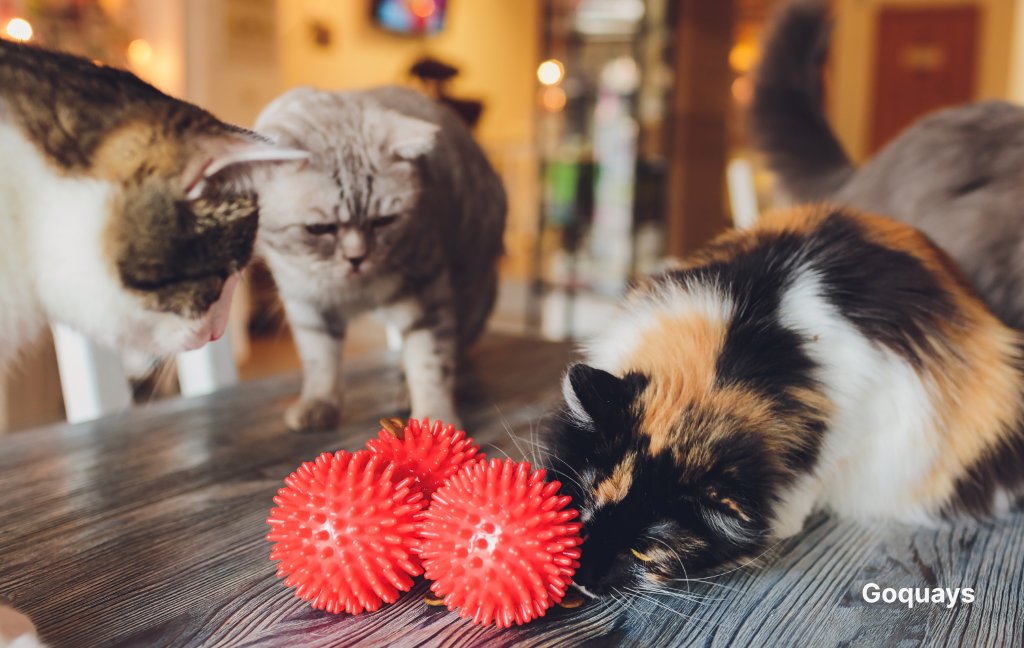
While indoor cats are protected from outdoor dangers, they still face risks like stress, obesity, and accidental escapes. Ensuring their safety and well-being is important to prevent health issues that could lead to higher vet bills and insurance claims.
Microchipping: A safety must-have
Even if your cat stays indoors, accidents happen—doors are left open, windows break, or emergencies force evacuations. A microchip permanently links your cat to your contact information, increasing the chances of being reunited if they ever get lost. Unlike collars, which can fall off, a microchip is reliable and tamper-proof. Some pet insurance providers even offer discounts for microchipped pets, recognizing their increased likelihood of safe recovery.
Preventing boredom and stress in indoor cats
Indoor cats need mental and physical stimulation to prevent anxiety, destructive behaviors, and weight gain. Some effective enrichment strategies include:
- Interactive play: Use wand toys, laser pointers, or food puzzles to mimic hunting.
- Vertical spaces: Install cat trees, shelves, or window perches for climbing and observation.
- Safe outdoor access: Consider a secure catio or harness training for limited outdoor exploration.
- Routine and predictability: Consistent feeding, playtime, and cozy rest areas help reduce stress.
Why this matters for insurance
A well-stimulated and healthy indoor cat is less prone to obesity, stress-related illnesses, and injuries, leading to fewer insurance claims and potentially lower premiums. Microchipping adds an extra layer of security, ensuring your cat is protected even if they unexpectedly get outside.
By keeping indoor cats happy and safe, pet owners can enhance their well-being while also managing long-term veterinary costs.
Outdoor Cats: Lifestyle, Risks, and Insurance Cost
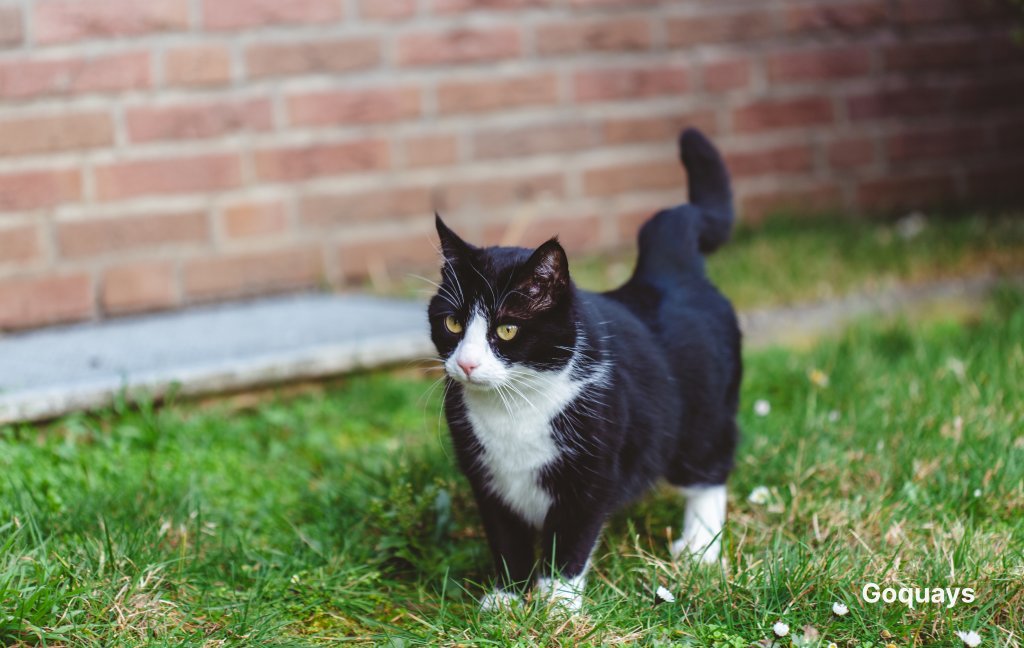
Outdoor cats get to enjoy a level of freedom that indoor cats can not experience. They get to explore their surroundings, climb trees, hunt small prey, and explore their natural feline behaviours like marking territories and socializing with other cats. Some pet parents allow their cats outdoor exploration to improve their physical fitness and overall quality of life.
However, this freedom comes with some risks because outdoor cats are exposed to various dangers, including traffic, predators, extreme weather conditions, and fights with other animals. The chaos and instability of outdoor spaces mean they have a higher chance of facing risks that can endanger their lives and health and impact insurance costs.
Common health risks for outdoor cats

While outdoor cats tend to be more physically active and agile, their exposure to various threats makes them far more vulnerable to accidents, injuries, and diseases. Here are some of the most common risks faced by outdoor cats:
- Risk of accidents and injuries
- Traffic Accidents: One of the biggest dangers for outdoor cats is getting hit by a car. Even cautious cats may misjudge traffic, leading to serious injuries such as fractures, internal bleeding, or even fatal accidents.
- Falls and Climbing Accidents: Cats that climb trees, fences, or buildings may fall and suffer broken bones or sprains.
- Animal Attacks: Outdoor cats can encounter predators like coyotes, foxes, and even aggressive dogs, leading to life-threatening injuries.
- Higher exposure to infectious diseases
- Feline Immunodeficiency Virus (FIV) and Feline Leukemia Virus (FeLV): These viruses are transmitted through bites and close contact with infected cats. Both conditions weaken a cat’s immune system, making them more susceptible to other infections and illnesses.
- Rabies: While rabies vaccinations are common, outdoor cats are at a higher risk of encountering rabid wildlife, such as raccoons or bats. Rabies is fatal and requires immediate medical intervention.
- Parasites: Outdoor cats are more likely to be infested with fleas, ticks, ear mites, and worms, requiring regular deworming and parasite control treatments.
- Higher likelihood of fights and territorial disputes
- Outdoor cats often encounter other cats, leading to territorial disputes and fights. These altercations can result in deep bite wounds and abscesses that may require antibiotics or even surgery.
- Cat fights are also a primary transmission route for FIV, making outdoor cats more vulnerable to this lifelong disease.
- Poisoning and Toxin Exposure
- Outdoor cats may ingest toxic substances, such as antifreeze, pesticides, rodenticides, or even poisonous plants.
- They are also at risk of consuming spoiled food or contaminated water, leading to gastrointestinal illnesses.
How outdoor lifestyles affect insurance
With the risk associated with an outdoor lifestyle for cats, insurance costs for them tend to be higher than those for indoor cats. Here’s how these risks impact policy pricing and coverage options:
- Higher monthly premiums due to increased risk: Because outdoor cats are more likely to require emergency vet care, insurers charge higher premiums to offset these potential expenses. Also, the likelihood of claims related to accidents, injuries, and infectious diseases means that insurance companies classify outdoor cats as high-risk pets.
- Frequent and costly claims: Veterinary visits for outdoor cats are more urgent and expensive, such as treatment for fractures, bite wounds, or poisoning. Chronic illnesses like FIV and FeLV require long-term management, leading to repeated insurance claims.
- Potential policy exclusion and higher deductibles: Some insurers exclude coverage for high-risk health issues, such as injuries from car accidents or animal fights. If you have an outdoor cat, you may face higher deductibles (the amount the owner pays before insurance kicks in) due to their increased likelihood of filing claims.
- Consider preventive care plans: With the health risks outdoor cats could face, investing in preventative care (such as vaccinations, flea and tick treatments, and regular check-ups)should be considered.
Conclusion
Deciding whether to keep your cat indoors or allow them outdoor access is a decision that affects their health, safety and your pet insurance costs. While indoor cats are generally safer and have lower insurance premiums, they are still at risk for obesity, stress-related illnesses, and chronic conditions. On the other hand, outdoor cats experience more freedom but face higher risks of accidents, injuries, and infectious diseases, leading to more expensive insurance plans with frequent claims.
Irrespective of your cat’s lifestyle, having the right insurance plan is to ensure you can afford unexpected vet bills without financial strain. A comprehensive policy that covers both accidents and illnesses is the best option, especially for outdoor cats. Also, preventive care add-ons can be beneficial for indoor cats, helping to manage wellness, vaccinations, and dental care.

